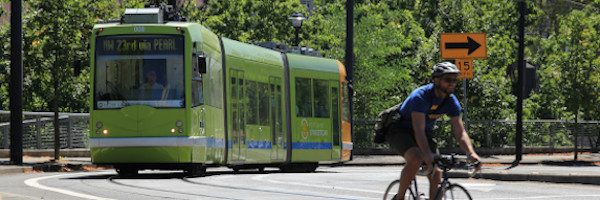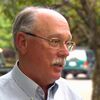Transportation: Difference between revisions
No edit summary |
No edit summary |
||
| Line 1: | Line 1: | ||
{{ | {{Chapter | ||
| image | |image=Transportation1Chapter.jpg | ||
| | |poc=Wilfred Pinfold | ||
| | |authors=Wilfred Pinfold, Skip Newberry, Jeff Allen, Ken Montler, Timothy Smith, Joe Cortright, Greta Knappenberger, Jill Sorensen, John Feo, Corey Marshall, Jose Gonzalez, Geoffrey Urbach | ||
| | |blueprint=Transportation | ||
| | |chapter=700 | ||
|sectors=Transportation | |||
| | |summary=National transportation systems are a network of roads, highways, railways, airports, and waterways that enables the movement of people and goods throughout and between countries. They are complex system that includes various modes of transportation, such as air, rail, road, and water, and are essential to the functioning of the country's economy. | ||
}} | }} | ||
There are several different modes of transportation that make up the national transportation system of the United States. These include: | |||
*'''Road''': This includes highways, streets, and roads that are used by cars, trucks, buses, and other vehicles to travel from one place to another. | |||
*'''Rail''': This includes trains that run on tracks and are used to transport people and goods across the country. | |||
*'''Air''': This includes airplanes and other aircraft that are used to transport people and goods through the air. | |||
*'''Water''': This includes ships, boats, and other watercraft that are used to transport people and goods across bodies of water, such as oceans and rivers. | |||
*'''Public transit''': This includes buses, subways, and other forms of mass transit that are used to transport people within cities and other urban areas. | |||
*'''Bicycle and pedestrian''': This includes paths, lanes, and other infrastructure that is dedicated to the use of bicycles and pedestrians. | |||
*'''Intermodal''': This refers to the use of multiple modes of transportation, such as shipping goods by truck to a port where they are then loaded onto a ship for transport by water. | |||
In the United States the national transportation system is overseen by the Department of Transportation (DOT) and various other agencies at the federal, state, and local levels. As of 2021, the United States had | |||
*More than 4 million miles of roads, including over 160,000 miles of interstate highways. | |||
*Approximately 30,000 miles of railroads, including both freight and passenger lines. | |||
*Over 19,000 airports, including more than 500 commercial airports. | |||
*More than 25,000 miles of waterways, including rivers, canals, and the Great Lakes. | |||
The U.S. transportation system supports a large and diverse economy, with goods valued at over $22 trillion shipped by various modes of transportation in 2019 including | |||
*A diverse fleet of vehicles, including over 250 million cars and trucks. | |||
*A total number of passenger trips on public transportation of 10.8 billion. | |||
*Over 940 million passengers travelling on U.S. airlines. | |||
Transportation systems are changing rapidly. There are many emerging technologies and trends that are expected to shape the future. Some of the key trends include: | |||
*'''[[Autonomous Vehicles]]''': Self-driving cars, trucks, and other vehicles are expected to become more common in the coming years. These vehicles use sensors, cameras, and other technologies to navigate roads and make decisions without human input. | |||
*'''[[Connected Vehicles]]''': Connected vehicles are vehicles that are equipped with sensors, cameras, and other technologies that allow them to communicate with each other and with infrastructure such as traffic lights and road signs. The goal of connected vehicles is to improve safety, reduce traffic congestion, and make transportation more efficient. | |||
*'''[[Electric and Hybrid Vehicles]]''': There is growing interest in electric and hybrid vehicles as a way to reduce dependence on fossil fuels and reduce emissions. These vehicles use electricity and/or alternative fuels to power their engines. | |||
*'''[[High Speed Rail]]''': High-speed rail systems, which can travel at speeds of over 200 miles per hour, are being developed in several countries and are expected to become more widespread in the future. | |||
*'''[[Hyperloop]]''': The Hyperloop is a proposed mode of transportation that would use a network of tubes to transport people and goods at high speeds. | |||
*'''[[Urban Air Mobility]]''': Companies are developing electric vertical takeoff and landing (eVTOL) aircraft and other technologies to enable the use of small aircraft for short trips within cities. | |||
*'''[[Shared Mobility]]''': Services such as ride-hailing and bike-sharing are expected to become more prevalent, offering convenient and affordable transportation options for short trips. | |||
Revision as of 06:39, January 17, 2023
- Authors
National transportation systems are a network of roads, highways, railways, airports, and waterways that enables the movement of people and goods throughout and between countries. They are complex system that includes various modes of transportation, such as air, rail, road, and water, and are essential to the functioning of the country's economy.
There are several different modes of transportation that make up the national transportation system of the United States. These include:
- Road: This includes highways, streets, and roads that are used by cars, trucks, buses, and other vehicles to travel from one place to another.
- Rail: This includes trains that run on tracks and are used to transport people and goods across the country.
- Air: This includes airplanes and other aircraft that are used to transport people and goods through the air.
- Water: This includes ships, boats, and other watercraft that are used to transport people and goods across bodies of water, such as oceans and rivers.
- Public transit: This includes buses, subways, and other forms of mass transit that are used to transport people within cities and other urban areas.
- Bicycle and pedestrian: This includes paths, lanes, and other infrastructure that is dedicated to the use of bicycles and pedestrians.
- Intermodal: This refers to the use of multiple modes of transportation, such as shipping goods by truck to a port where they are then loaded onto a ship for transport by water.
In the United States the national transportation system is overseen by the Department of Transportation (DOT) and various other agencies at the federal, state, and local levels. As of 2021, the United States had
- More than 4 million miles of roads, including over 160,000 miles of interstate highways.
- Approximately 30,000 miles of railroads, including both freight and passenger lines.
- Over 19,000 airports, including more than 500 commercial airports.
- More than 25,000 miles of waterways, including rivers, canals, and the Great Lakes.
The U.S. transportation system supports a large and diverse economy, with goods valued at over $22 trillion shipped by various modes of transportation in 2019 including
- A diverse fleet of vehicles, including over 250 million cars and trucks.
- A total number of passenger trips on public transportation of 10.8 billion.
- Over 940 million passengers travelling on U.S. airlines.
Transportation systems are changing rapidly. There are many emerging technologies and trends that are expected to shape the future. Some of the key trends include:
- Autonomous Vehicles: Self-driving cars, trucks, and other vehicles are expected to become more common in the coming years. These vehicles use sensors, cameras, and other technologies to navigate roads and make decisions without human input.
- Connected Vehicles: Connected vehicles are vehicles that are equipped with sensors, cameras, and other technologies that allow them to communicate with each other and with infrastructure such as traffic lights and road signs. The goal of connected vehicles is to improve safety, reduce traffic congestion, and make transportation more efficient.
- Electric and Hybrid Vehicles: There is growing interest in electric and hybrid vehicles as a way to reduce dependence on fossil fuels and reduce emissions. These vehicles use electricity and/or alternative fuels to power their engines.
- High Speed Rail: High-speed rail systems, which can travel at speeds of over 200 miles per hour, are being developed in several countries and are expected to become more widespread in the future.
- Hyperloop: The Hyperloop is a proposed mode of transportation that would use a network of tubes to transport people and goods at high speeds.
- Urban Air Mobility: Companies are developing electric vertical takeoff and landing (eVTOL) aircraft and other technologies to enable the use of small aircraft for short trips within cities.
- Shared Mobility: Services such as ride-hailing and bike-sharing are expected to become more prevalent, offering convenient and affordable transportation options for short trips.












